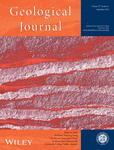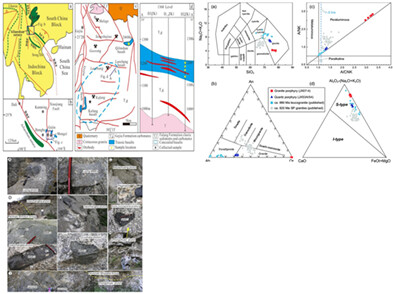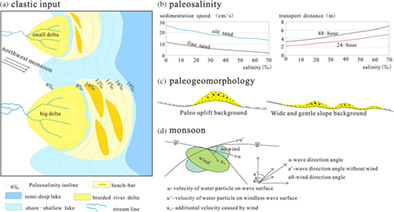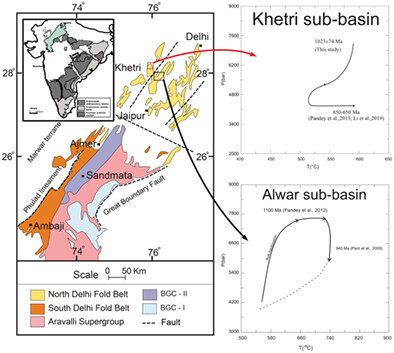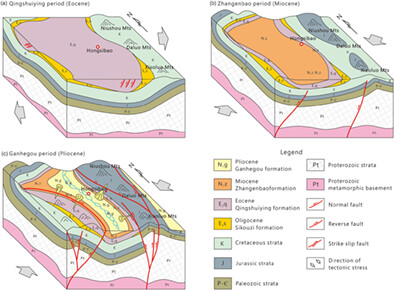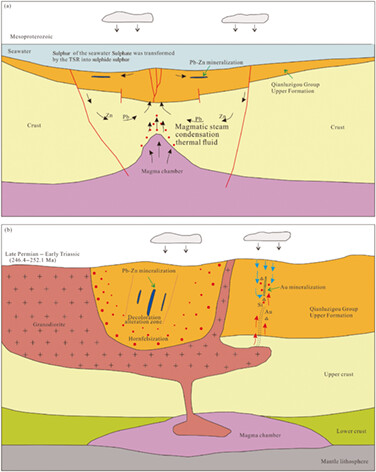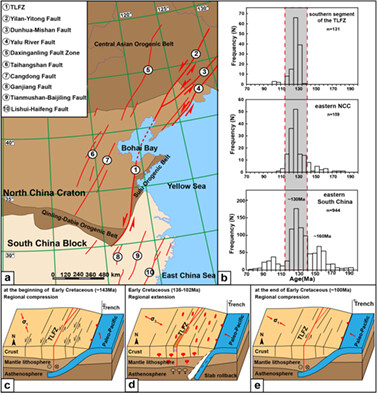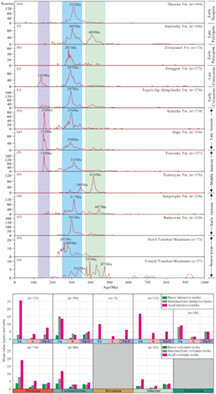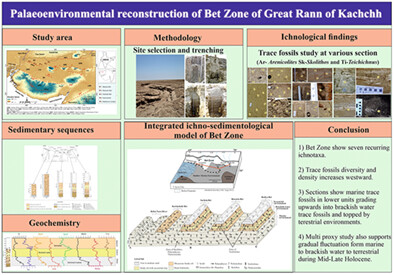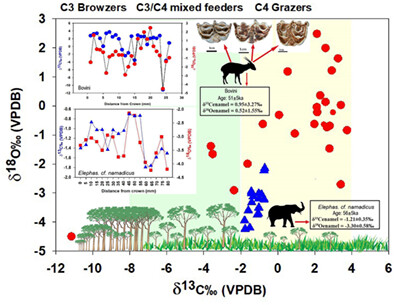Journal list menu
Export Citations
Download PDFs
ISSUE INFORMATION
RESEARCH ARTICLES
A comprehensive review on zircon (U–Pb) geochronology, geochemistry and geological significance of granite rocks, provenance, tectonic implications, exhumation history, current status, and perspectives
- Pages: 3463-3477
- First Published: 31 May 2022
Controls on the occurrence of beach-bar sandstone in a Neogene saline lake basin, southwestern Qaidam Basin, China
- Pages: 3478-3495
- First Published: 11 July 2022
Metamorphic evolution of the North Delhi Fold Belt, implications on Delhi orogeny and the Rodinia connection
- Pages: 3496-3520
- First Published: 05 May 2022
A new structurally preserved fossil umbrella pine from the Jurassic of East Asia
- Pages: 3521-3537
- First Published: 15 June 2022
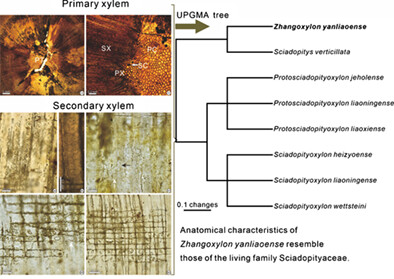
The Sciadopityaceae are today a monotypic and relict family of the Coniferales, restricted to Japan with an endemic species of Sciadopitys verticillata Sieb. et Zucc., known as umbrella pine. Megafossil remains assigned to the Sciadopityaceae have been reported from various parts of the boreal hemisphere. However, structurally preserved fossil wood of the Sciadopityaceae is poorly documented. Here we present an anatomically preserved fossil wood of the Sciadopityaceae from the Jurassic of East Asia. A new fossil wood Zhangoxylon yanliaoense gen. et sp. nov. is proposed for the specimens, which are anatomically characterized by a heterogeneous pith, endarch primary xylem and special secondary xylem. The anatomical structures of the new genus are similar to those of the living Sciadopitys except for the type of radial pitting. The present specimen has an araucarian radial pitting, while that of the living Sciadopitys is abietinean. Therefore, Zhangoxylon gen. nov. from the Middle to Late Jurassic (Callovian to Kimmeridgian) in western Liaoning may represent the Sciadopitys-like petrified wood which bears pith and primary xylem. This new fossil, so far, the best-known fossil wood of the family Sciadopityaceae, sheds light on the early evolutionary history of the family Sciadopityaceae, and contributes to a better understanding of the palaeoenvironment of the Jurassic Yanliao Biota in East Asia.
Hydrothermal silicification and its impact on Lower–Middle Ordovician carbonates in Shunnan area, Tarim Basin, NW China
- Pages: 3538-3557
- First Published: 12 June 2022
Physical simulation experiments of structural deformation and hydrocarbon accumulation in piggyback thrust wedges
- Pages: 3558-3568
- First Published: 22 May 2022
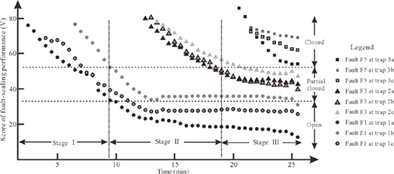
The image is fault-sealing evolution, which was evaluated by the structural deformation and hydrocarbon accumulation experiment. The soybean oil injection was performed at the last minute, but the injection can be performed in any fault-sealing stage. So, the image theoretically inverts the coupling relationship between fault-sealing capacity and hydrocarbon accumulation in time and space.
Feedback between topography and lithosphere–asthenosphere dynamics beneath the Yerer-Tulu Wellel volcano-tectonic lineament: Insights from apatite thermochronology and basalt geochemistry
- Pages: 3569-3586
- First Published: 12 June 2022
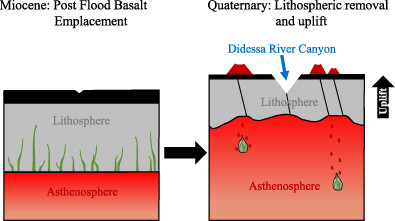
Magmatic activity from the Neoproterozoic through the Oligocene created dense metasomes in the lower lithosphere (green veins in the first box model). Faulting in the Mid-Miocene facilitated the creation and release of dense lithospheric drips, which then sank into the underlying mantle and began melting. This process has manifested itself on the surface via cinder cones across the YTVL, lithospheric exhumation following the release of the dense drips, and river incision through the uplifted landscape.
Chemical weathering intensity and geochemical characteristics of Cretaceous terrigenous clastic rock-purple soil profiles in the Pushi area, Xichang
- Pages: 3587-3600
- First Published: 11 July 2022
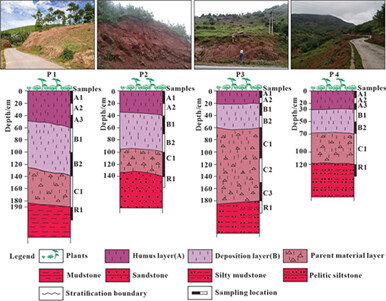
The Pushi area of South-west China features a large area of purple soil that formed by the weathering of Cretaceous terrigenous clastic rocks. The overall chemical weathering intensity of argillaceous rocks was slightly higher than that of sandstone, and the four profiles generally reflected medium to strong chemical weathering. The chemical weathering characteristics varied for the four profiles with different pedogenic parent rocks, which could be mainly attributed to internal factors such as the lithology of the pedogenic parent rock and external topographic factors such as altitude.
Eogene to Neogene north-eastward expansion of the arcuate tectonic belt in north-east Tibetan Plateau: Constraints from detrital zircon geochronology and heavy minerals
- Pages: 3601-3622
- First Published: 20 May 2022
Geological and geochemical constraints on the genesis of the Xiqianluzi Pb–Zn polymetallic deposit in Beishan, Gansu Province, NW China
- Pages: 3623-3647
- First Published: 29 May 2022
Basement fault control on the extensional process of a basin: A case study from the Cambrian–Silurian of the Sichuan Basin, South-west China
- Pages: 3648-3667
- First Published: 28 May 2022

This study provides new constraints on the dynamic setting of the Sichuan Basin during the Cambrian–Silurian using a fine interpretation of seismic profiles and strata thickness analysis. The facts that the Leshan–Longnvsi palaeo-uplift was an extensional structure and basement faults were normal faults suggest that the Sichuan Basin was in an extensional setting during the Cambrian–Silurian. Seven basement faults controlled the extensional process during the Cambrian–Silurian in the Sichuan Basin.
Deformation history of the Feidong Segment of the Tan–Lu Fault zone in the Early Cretaceous: Implications for the tectonic evolution in eastern China
- Pages: 3668-3685
- First Published: 10 June 2022
Biostratigraphy, palaeoecology, and palaeobiogeography of the Middle–Late Eocene ostracods, north-west Fayoum area, Egypt
- Pages: 3686-3705
- First Published: 08 June 2022
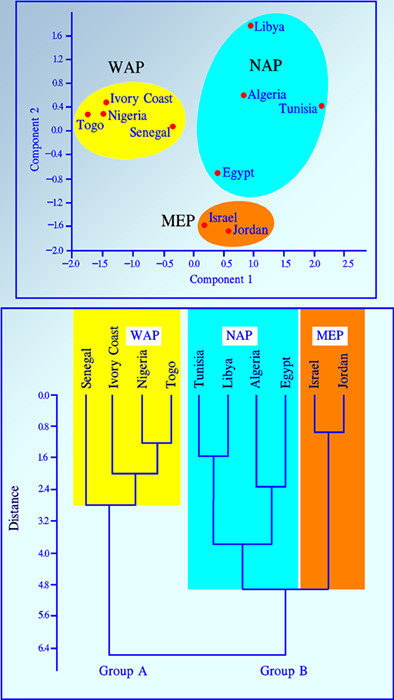
This study concentrates on the Middle–Late Eocene ostracods from Fayoum area, Egypt. It represents an attempt to use the multivariate analyses to detect the similarity between the Egyptian ostracods and those from the southern Tethys and western Africa. The results of Principal Compenent Analysis (PCA) and Q-mode cluster analysis construct three provinces, North Africa, the Middle East, and West Africa. The strong similarity between these provinces supports the migration of ostracods along the southern Tethys during Eocene age.
Discovery of a Mesoproterozoic granite in the northern Alxa Block and its tectonic implication
- Pages: 3706-3720
- First Published: 30 May 2022

Integrating the new zircon U–Pb ages of gneissic granites, published geochronological data and Nd isotopic compositions of igneous rocks from the northern Alxa Block and its vicinity, we propose that the ZHTZ, Hanshan Block, Tsaggan Uul terrane, and the Hutag Uul terrane may share a common Precambrian crystalline basement, which may constitute the Late Riphean South Gobi microcontinent.
Palaeogeography and provenance transition of Precambrian–Cambrian unconformity at the southern margin of the North China Craton
- Pages: 3721-3735
- First Published: 01 June 2022

Precambrian–Cambrian unconformity exists between the Luoquan and Xinji formations. The former comprises glacial to deglaciation deposits, and the latter is composed of shallow to coastal deposits. The provenance area of the Luoquan Formation is the North China Craton (NCC), and the provenance areas of the Xinji Formation are the NCC and the Qinling Terrane.
Multiproxy analysis constraining climatic control over the Cenozoic depositional history of Kachchh, Western India
- Pages: 3736-3768
- First Published: 08 June 2022
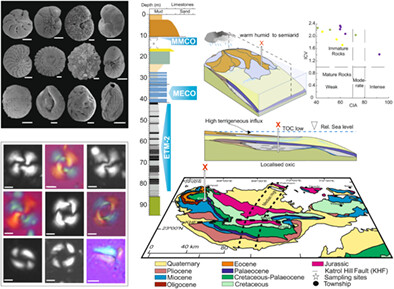
Foraminiferal, nannoplankton, geochemical, and sedimentological studies on the Cenozoic sediments of Kachchh Basin, India, reveals deposition within a humid, tropical, localized periodic oxic-dysoxic environment. Signals of global events like Eocene Thermal Maximum-2, Middle Eocene Climatic Optimum, and Mid Miocene Climatic Optimum are inferred and presented with facies development models.
Terrestrial impact craters track the voyage of lithospheric plates
- Pages: 3769-3780
- First Published: 01 June 2022
The physical and geochemical character of the post-depositional alterations in the Early-Middle Jurassic carbonates on the western margin of the Indian Plate: Implications for cement morphologies and dolomitization
- Pages: 3781-3807
- First Published: 14 July 2022
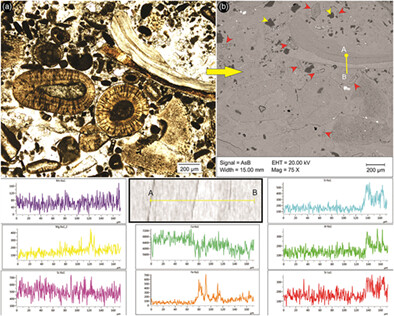
The transition from Early to Middle Jurassic is marked by an increase in dolomitization and bioturbation but intensity decreases on the N-S transect. The pore occluding cements of the Middle Jurassic carbonates are Fe deficient, have low Sr and Mn levels as compared to the Lower Jurassic carbonates. The redox potential suggests majority of the grain supported carbonates represent early cementation under oxic-dysoxic conditions.
Rhyacian-Orosirian Khondalite Belt in the Borborema Province (NE Brazil): An active margin setting based on U–Pb zircon and monazite constraints
- Pages: 3808-3828
- First Published: 04 June 2022
Detrital zircon U–Pb geochronology and Hf isotopes of Mesozoic through Cenozoic sandstones from the southern Junggar Basin, NW China: Implications for the provenances and uranium source
- Pages: 3829-3850
- First Published: 29 June 2022
Petroleum generation modelling of the Middle-Late Cretaceous sediments in the Abu Gharadig Field, Northwestern Desert, Egypt
- Pages: 3851-3880
- First Published: 01 July 2022
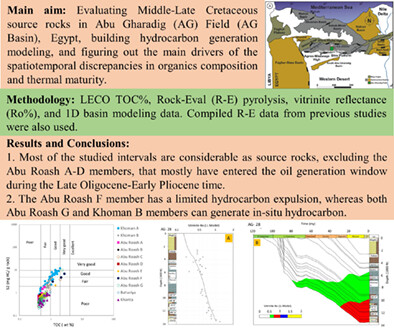
The present study targets the evaluation of mid-late Cretaceous rock units in the Abu Gharadig Field employing geochemical characterization data as well as generation modeling. Here, cuttings from 4 wells were assessed using TOC%, Rock-Eval pyrolysis, and vitrinite reflectance (Ro%) analyses. Also, 1D basin models were constructed for these wells to identify different stages and timing of hydrocarbon generation. Our results showed that each of Kharita and Bahariya formations have poor to fair organic richness of mainly type III kerogen that is mainly gas-prone. Moreover, Abu Roash (A/R) E, F, and G members exhibit poor to very good organic richness of mixed type II-III and type III kerogens with mainly gas and minor oil generative potential. Noteworthy, A/R B, C, and D members are non-source rocks, based on their poor organic richness and poor generation potential. The Khoman B member has poor to fair organic richness of mainly kerogen type II-III that is mainly oil- and gas-prone. On the other hand, the Khoman A has poor to good organic richness of type III, mixed type II-III, and type II kerogens with both oil- and gas generative potential. Vitrinite and Rock-Eval (Tmax and Production Index) thermal maturity parameters are all indicating that the mid-late Cretaceous source rocks are mostly mature and entered the oil generation window. The burial history models demonstrated the predominance of high rates of subsidence during the Cretaceous time followed by the Syrian arc folding event during Santonian-Tertiary time forming the main trapping style in the area. The maturity and generation models implied that the A/R G source rock came into the peak of the oil generation window at a time since ~23 to ~4 m.y. Moreover, the A/R F source rock has reached the peak of the oil window since ~22 to ~7 m.y. Instead, the Khoman B source rock has entered only the early generation stage since ~28 to ~18 m.y. The transformation ratio (TR%) of these source rocks indicates that at least limited hydrocarbon expulsion (TR >25%) took place, but hydrocarbon migration to a nearby prospect is still rather unlikely due to the <50% TR. On a basin scale, our synthesis using spatial and temporal Rock-Eval data of the studied mid-late Cretaceous rock units across the Abu Gharadig basin demonstrated a spatiotemporal heterogeneity in the organic matter type and maturity. The heterogeneity can be attributed likely to changes in bioproductivity, paleo-oxygenation, water column conditions, riverine input, and sedimentation rates. These constraints were manipulated mainly by variations in paleoclimate, eustatic sea-level, and basin tectonics.
Records of the oceanic propagator closure at the southern splay of the Palaeo-Tethys
- Pages: 3881-3915
- First Published: 08 July 2022
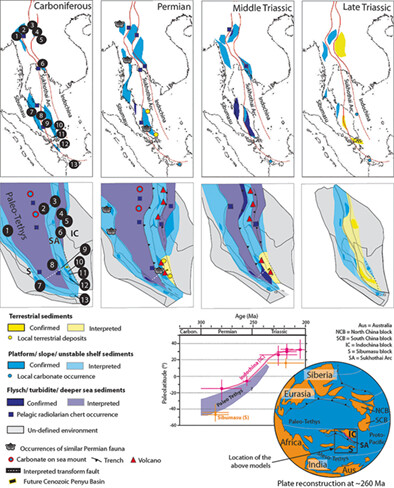
Closure model of the southern splay of the Palaeo-Tethys at the Carboniferous, Permian, Middle Triassic, and Late Triassic time. Top row: Geological evidence of the local depositional environment at each geological time. Bottom row: Palaeogeography models based on local geological evidence at each geological time. The actual palaeo-latitudes are not applied in this model to ease the explanation and understanding. The palaeo-latitudes of the Sibumasu and Indochina blocks from the Late Carboniferous to Triassic times and plate reconstruction of Late Permian (~260 Ma) served as the references.
Middle to Late Holocene palaeoenvironmental evolution of the western Great Rann of Kachchh, India: Insights from ichnology, geochemistry, and sedimentology
- Pages: 3916-3934
- First Published: 01 July 2022
Stable Isotopic studies of the herbivorous mammals from the Marginal Ganga Plain, India: implication for the palaeo-environmental reconstruction
- Pages: 3935-3948
- First Published: 12 June 2022
Integrating Aster 07XT, Landsat 8, and aeromagnetic data for the delineation of potential mineralization sites in North Cameroon
- Pages: 3949-3971
- First Published: 06 June 2022

The study area contains several gold-bearing quartz veins associated with hydrothermally altered zones rich in sulphides, muscovite/sericite, iron oxides, and hydrous silica. Despite the mining potential of the area, several zones remain unexplored. In this study, Aster 07XT, Landsat 8, and aeromagnetic data were integrated to detect potential zones associated with gold mineralizations in Northern Cameroon. For this purpose, the relative band absorption depth, band ratioing, and analytic signal (AS) techniques were applied to enhance, identify and map hydrothermal alteration minerals, that is, hydroxyl-bearing, iron oxide/hydroxide. Besides, a semi-automatic approach was applied to extract remotely sensed and aeromagnetic lineaments from PCI Geomatica and Centre for Exploration Targeting Grid Analysis respectively. Hence, several potential mining targets were delineated from the processing of both remote sensing and aeromagnetic data. The intersection of all region of interest pixel points from argillic (314 942), phyllic (304 740), and propylitic (327 377) alteration minerals allowed the enhancement of 1077 pixel points which represent areas where argillic, phyllic, and propylitic alteration coincide. Hence, the 1077-pixel points computed were considered potential mining sites. The extracted lineaments and 1077 potential ore deposits were superimposed on both the AS anomaly map (in purple) and the band ratio 4/2 image (iron oxides better enhanced in red with 20% transparency). We could denote that most of the 1077 potential mining sites fall either on the purple signal (representing high magnetic susceptibility areas due to magnetite, ilmenite, etc.) or on the red signal which is linked to iron-bearing minerals such as haematite, goethite, jarosite, etc. Thus, there exists a positive correlation between the 1077 potential sites and iron oxide minerals. Besides, the structural features extracted from both remote sensing and magnetic data show a positive correlation with most of the 1077 potential sites enhanced. The target hydrothermal alteration zones were proved to be spatially associated with known mining areas and gold occurrences in the study area. Consequently, new prospective mining areas have been designated. This study confirmed the reliability and applicability of the processing of satellite imagery in mineral exploration in Northern Cameroon. It is suggested that the dataset used in this study provides a suitable tool for mapping hydrothermal alteration minerals linked to gold deposits and can be applied in other provinces with similar geological settings.




